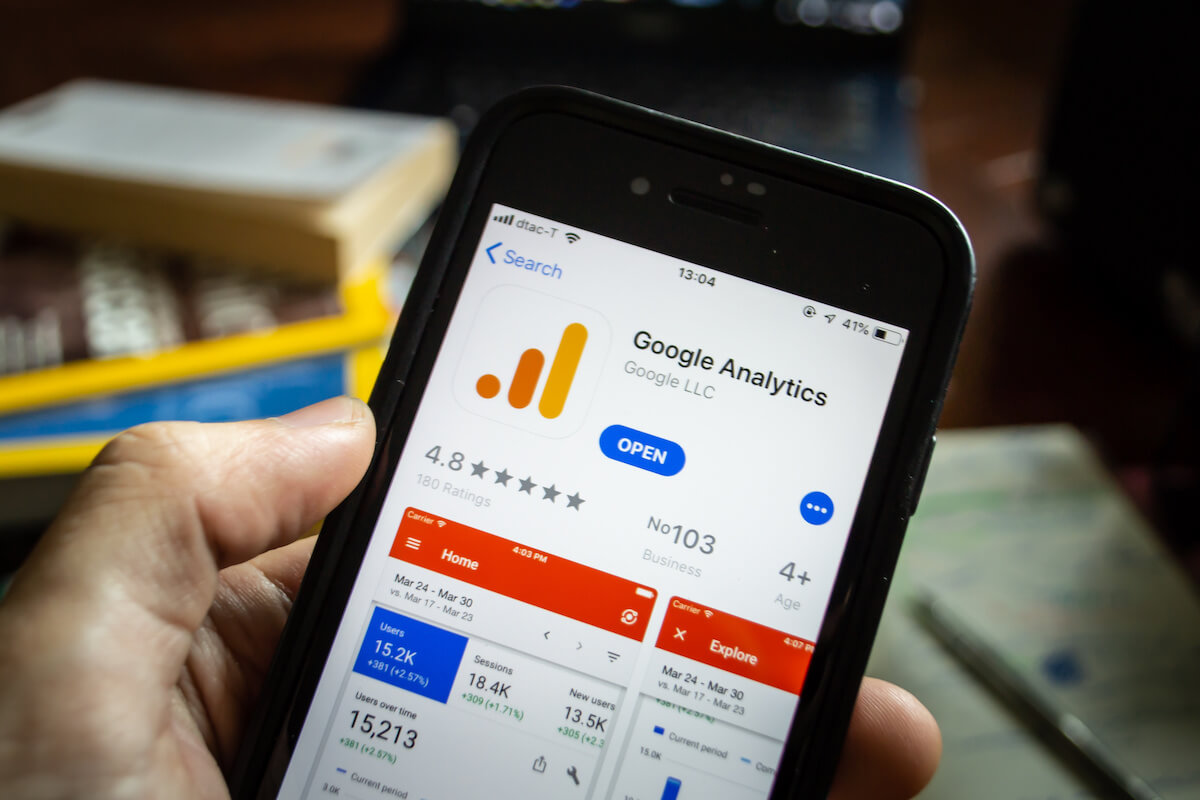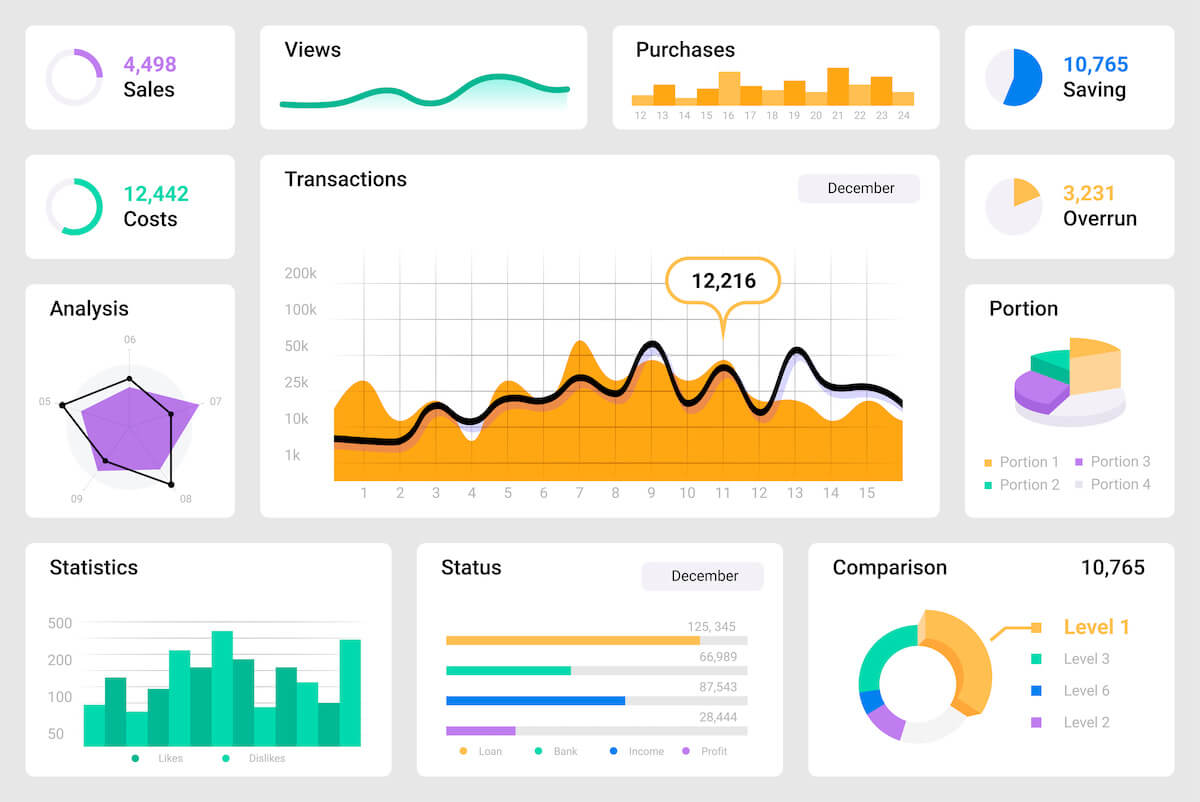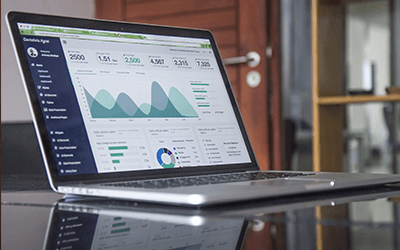As a business owner, you know that understanding your customers is essential to successful strategic planning. And for years, businesses have relied on Universal Analytics to gain insights into user behavior. But now, there’s a new player in town: Google Analytics 4 (GA4).
GA4 is the next generation of Analytics, designed to collect event-based data from both websites and apps. It offers a more comprehensive and flexible measurement approach that considers the complex, multi-platform journeys of your customers. But what exactly is GA4, and why should you care? Let’s take a look at the top 6 things businesses need to know about GA4 and how it can help you stay ahead of the curve when it comes to analytics and measurement.

1. Google will sunset Universal Analytics in July 2023.
If you’re currently using Universal Analytics to measure your website or app, it’s important to know that Google will soon be phasing it out. Starting July 1, 2023, standard Universal Analytics properties will stop processing new hits, and new data will only flow into GA4 properties. It’s important to make the switch before the July deadline to avoid losing important data.
So, why is this happening? In short, Universal Analytics was built for a different era of online measurement. It was designed to measure the desktop web and relied heavily on cookies and session-based data. But in today’s digital landscape, users interact with brands across multiple platforms and devices, making it more important than ever to have a measurement solution that can capture the full picture of customer behavior.
2. Google Analytics 4 uses event-based data collection.
One of the biggest differences between GA4 and Universal Analytics is how data is collected. Universal Analytics relies on session-based data, which is based on a user’s interactions with your website or app during a single visit. Session-based data is limited and doesn’t fully represent a user’s journey.
GA4, on the other hand, uses an event-based data model that allows for more granular tracking of user behavior. Instead of just tracking sessions, GA4 tracks individual actions taken by a user, such as clicking a button or watching a video.
For example, let’s say you run an e-commerce site and want to see how users are interacting with your product pages. With Universal Analytics, session-based data can show how many users visited a particular page or how long they spent on it. But with GA4, you could track individual actions like clicks on the “Add to Cart” button or time spent watching a product video. This in-depth reporting allows you to see a more complete view of how users engage with your site and make data-driven decisions to improve the user experience.
3. You’ll be able to measure user data across platforms.

One of the biggest challenges businesses face today is understanding their customers’ journeys across multiple platforms. With users moving seamlessly between websites and apps, getting a full picture of how they interact with your brand from the top of your funnel to the bottom can be challenging.
GA4 is designed to provide a unified view of your customers’ journeys across all your digital properties. This means you can see how users interact with your website, app, and any other online channels you use, all in one place.
For example, let’s say you have an e-commerce site and a mobile app for your business. With Universal Analytics, you might have to track data separately for each platform, which can be time-consuming to compile into a complete picture of your customer journey. But with GA4, you can see how users interact with your website and app and track their behavior across both platforms. Being able to see how users interact with your brand across all touchpoints is a game-changer for businesses looking to gain a more complete view of their customers’ journeys.
4. GA4 makes user privacy a top priority.
In today’s world, privacy is more important than ever. Customers are increasingly concerned about how their data is collected and used, and businesses need to address these concerns proactively to maintain consumer trust.
As more and more users opt out of third-party cookies, we need a new approach to collect meaningful data about customer experiences. That’s where GA4’s privacy controls come in. Unlike Universal Analytics, which relies on cookies to track user behavior, GA4 offers cookieless measurement.
But that’s not all — GA4 also includes other privacy controls to help protect user data. For example, GA4 no longer stores IP addresses, which can help protect user privacy and ensure compliance with international data privacy regulations. By being proactive about privacy, businesses can show their customers that they take data privacy seriously and are committed to using data in a responsible way.
5. GA4 uses machine learning to generate predictive insights.
One of the most exciting features of GA4 is its predictive capabilities. Using machine learning technology, GA4 can generate sophisticated predictive insights about user behavior and conversions.
So, how does it work? GA4 uses machine learning algorithms to analyze your data and identify patterns and trends that may not be immediately obvious. For example, it can identify users likely to purchase a specific product based on their past behavior or predict when they will likely churn based on their interactions with your site or app.
This kind of predictive analysis can be incredibly valuable for businesses, allowing them to address customer needs and behaviors proactively. For example, if GA4 identifies a group of users who are likely to churn, you can take steps to re-engage them and prevent them from leaving. Or, if it identifies a group of users who are likely to make a purchase, you can target them with relevant marketing messages and promotions.
6. You’ll be better able to measure the success of your campaigns.
Measuring the impact of marketing campaigns can be challenging, especially when customers interact with your brand across multiple channels and touchpoints. But with GA4’s data-driven attribution, businesses can get a more comprehensive view of how their marketing efforts impact customer behavior.
So, what is data-driven attribution, exactly? Simply put, it’s a more sophisticated way of measuring the impact of marketing campaigns that goes beyond last-click attribution. With data-driven attribution, GA4 can analyze the full impact of your marketing across the entire customer journey, assigning attribution credit to all the touchpoints that contribute to a conversion.
For example, if a customer clicks on an ad, browses your site, but doesn’t make a purchase until later, GA4’s data-driven attribution can still attribute that conversion to the ad, even if it wasn’t the last touchpoint. By measuring the full impact of marketing across the entire customer journey, businesses can make more informed decisions about where to invest their marketing dollars and drive better business results.
How to Set Up Google Analytics 4

If you’re ready to make the switch to GA4, there are a few things you can do to ensure a smooth transition:
- Create a GA4 property: To start using GA4, you’ll need to create a new property in your Google Analytics account. You can do this through the Google Analytics interface or the Google Tag Manager.
- Set up tracking: Once you’ve created your GA4 property, you’ll need to set up tracking for your website or app. This can be done using the Google Tag Manager or adding the GA4 tracking code to your website or app.
- Migrate your data: If you’re currently using Universal Analytics, you’ll want to migrate your data to GA4 to ensure a seamless transition.
- Learn the new interface: GA4 has a new interface that may take some time to get used to. Thankfully, Google offers a course to help you get up to speed. Take some time to familiarize yourself with the new interface and the available reports and features.
Ready to switch to GA4 but need assistance with the transition process? At Designzillas, we offer expert GA4 migration services to help businesses smoothly transition to this next-generation measurement solution. Our team of experienced digital marketing professionals can guide you through the entire process so you can rest assured that your transition to the new platform will be seamless and successful.
So, if you’re looking for expert assistance with your GA4 migration, give us a call! We’ll work with you to ensure that your data is being collected accurately and that you’re taking full advantage of all the new features and capabilities of GA4.






